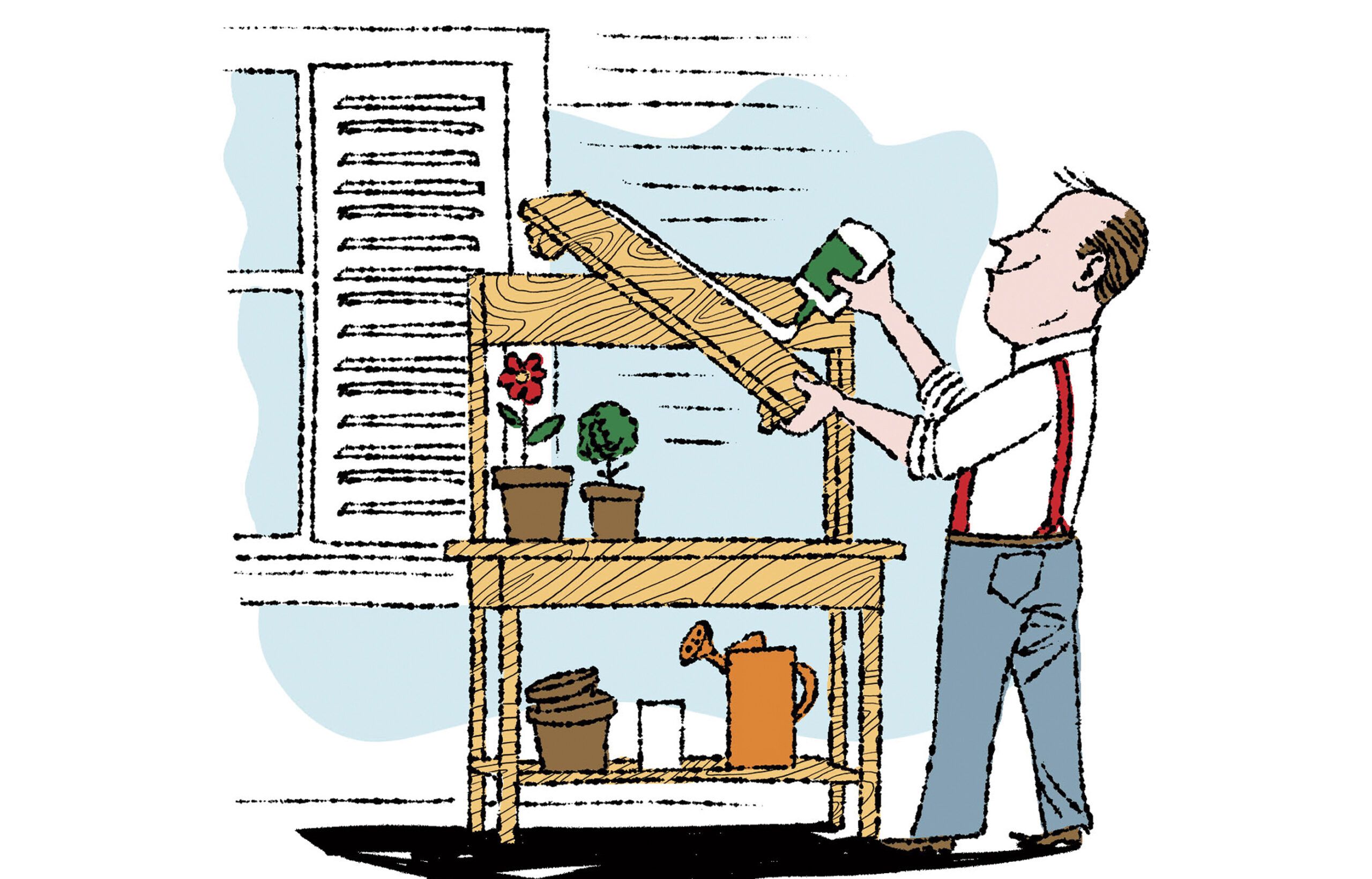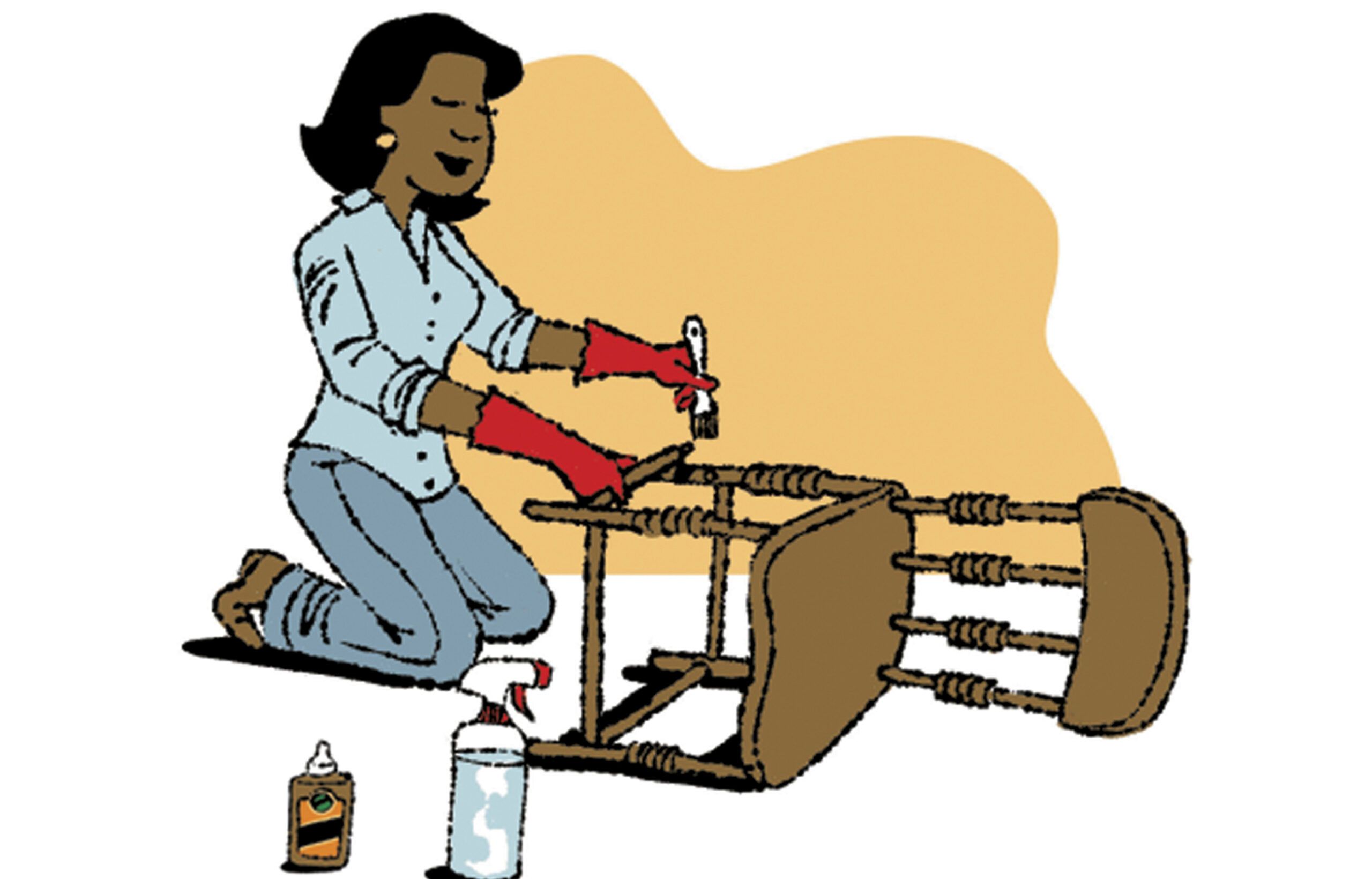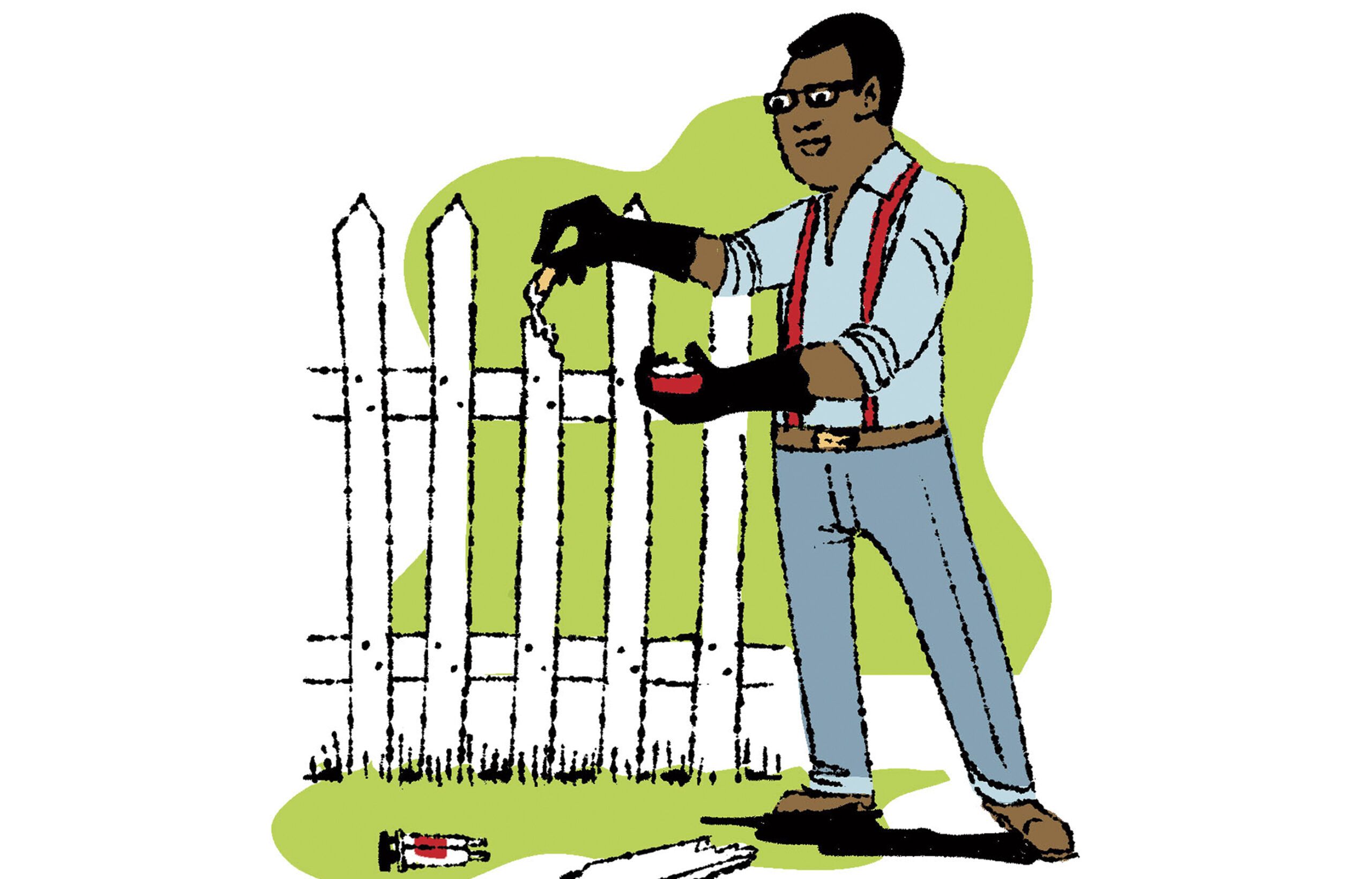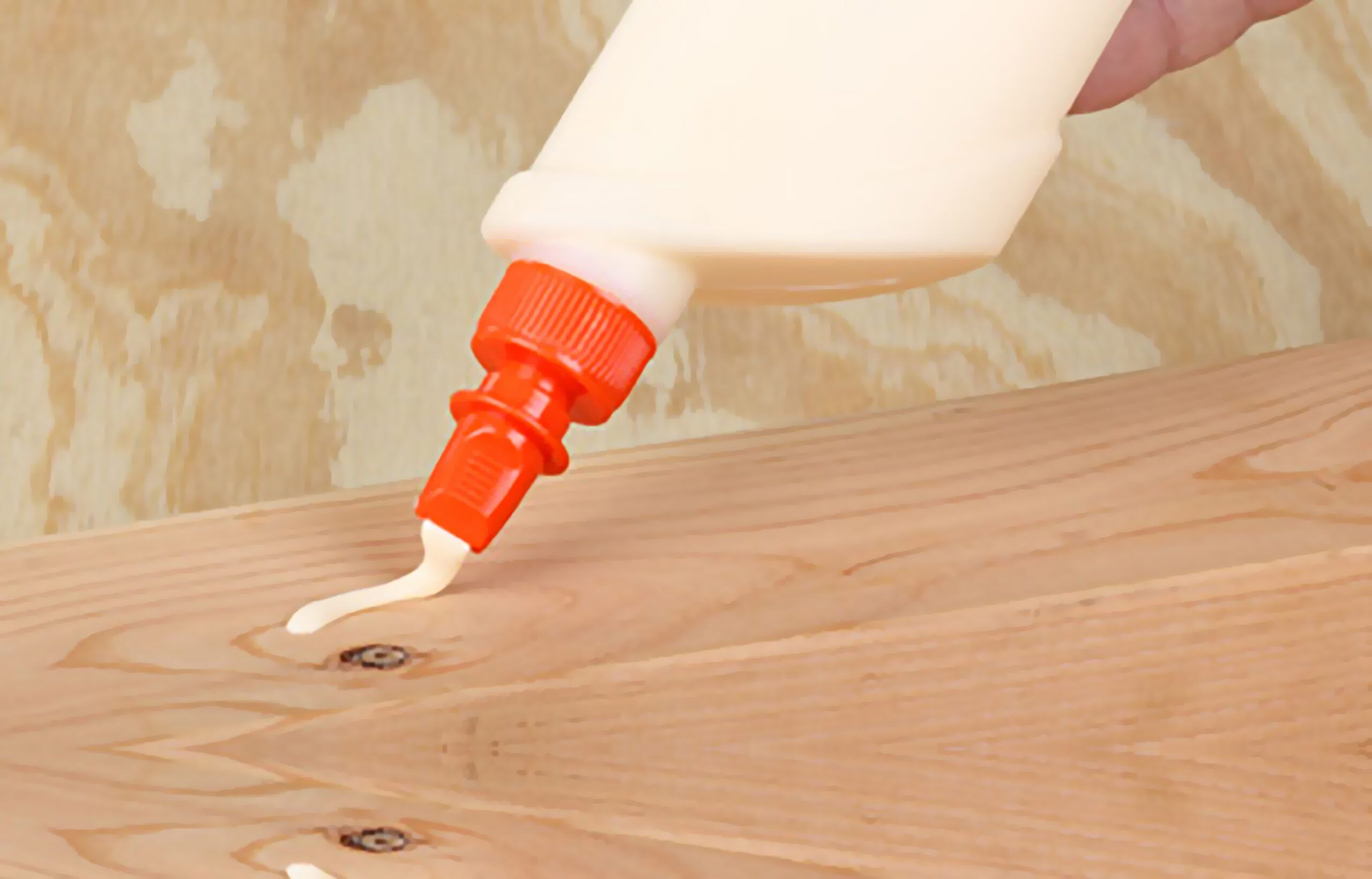With so many options available, choosing the right wood glue for your project can be overwhelming. Our guide will help you select the perfect adhesive, whether you’re repairing cracked drawers or mending outdoor furniture. We’ll explore different types of wood glue, their ideal applications, and some of our top troubleshooting tips.
Wood Glue Basics
Before discussing specific types of wood glue, let’s explore what wood glue is and how it works so you can make the right choices for your project.
What Is Wood Glue?
Wood glue is a specialized adhesive designed to bond wood surfaces together. It comes in various formulations, each tailored to specific applications and environmental conditions. Wood glues can be water-based, solvent-based, or reactive, depending on their chemical composition and intended use.
How Does Wood Glue Work?
Wood glue works by penetrating the porous surface of wood and creating a strong bond as it dries. The adhesive fills microscopic gaps in the wood fibers, forming a mechanical and chemical bond. As the glue cures, it hardens and creates a durable connection between the wood pieces.
Types of Wood Glue and Their Uses
Different wood glues are formulated for specific purposes. Understanding the characteristics of each type will help you choose the right adhesive for your project.
Yellow Polyvinyl Acetate (PVA)
Yellow PVA glue is a versatile and popular choice for many woodworking projects. It’s a step up in strength from white craft glue, which is also a PVA adhesive. This water-based glue creates a strong wood-to-wood bond and is ideal for interior projects.
- Best for: General woodworking, furniture repair, and indoor projects.
- How to use: Apply glue to both surfaces and clamp them together for at least 30 minutes. The glue reaches full strength within 24 hours. If the seam oozes, wipe immediately with a damp cloth.
- Product recommendation: Elmer’s Carpenter’s Wood Glue, $5.99 for 8 ounces*
Stainable PVA
Stainable PVA glue has the same formula as yellow PVA but with added wood fibers. This glue results in a beige paste that accepts stain, making it perfect for projects where the glue line might be visible.
- Best for: Stain-grade molding and visible joints in stained wood projects.
- How to use: First, test the glue’s stain acceptance on scrap wood. Then, apply it to one side of the joint and press the edges together, securing them with clamps or finishing nails for 1 hour. The glue will cure to full strength in 24 hours.
- Product recommendation: Elmer’s Carpenter’s Wood Glue Max, $4.67 for 8 ounces
Water-Resistant PVA
This glue is like other yellow PVAs but repels water, making it suitable for light outdoor repairs. It’s so effective that the wood around the glue will often rot or crack before the glue fails.
- Best for: Outdoor furniture, potting benches, and other projects exposed to moisture.
- How to use: Apply a heavy bead to one side, then clamp for 30 minutes. Leave the joint alone for 24 hours while the glue cures.
- Product recommendation: Titebond III Ultimate Wood Glue, $7.48 for 8 ounces
Polyurethane Glue
Polyurethane glue bonds wood, metal, and even old glue. When exposed to water, it expands as it cures, which helps reduce wiggle room in loose joints.
- Best for: Loose joints, mixed material bonding, and gap-filling applications.
- How to use: Wear gloves and lightly dampen one side of the project. Add a thin layer of glue to the other side and clamp for up to 2 hours. Clean up spills with paint thinner.
- Product recommendation: Gorilla Glue Polyurethane, $9.79 for 8 ounces
Two-Part Epoxy
Two-part epoxy is an ultra-tough glue made by mixing a resin and a hardener. It sets quickly, fills ragged gaps, and resists water and most solvents.
- Best for: Structural repairs, gap filling, and water-resistant applications.
- How to use: Measure out the correct 1-to-1 ratio using the glue’s double-barrel syringe. Wear gloves and clean up drips with acetone.
- Product recommendation: Loctite Epoxy Quick Set, $7.95 for 0.85 ounces
*Cost information based on 2024 prices on Amazon and The Home Depot.
Choosing the Right Glue for Common Wood Projects
Selecting the appropriate glue for your specific project helps achieve a strong, lasting bond. Here are some common wood projects and the best glues to use for each.
Cracked Drawers
Yellow PVA glue is an excellent choice for repairing cracked drawers. Its strong wood-to-wood bond and ease of use make it ideal for this indoor application. Apply the glue to both surfaces of the crack, clamp the pieces together, and allow the glue to dry for at least 30 minutes before removing the clamps.

Joints on Stain-Grade Molding
When working with stain-grade molding, use stainable PVA glue to make sure that the glue line won’t be visible after staining. We recommend testing the glue’s stain acceptance on scrap wood before applying it to your project. This glue helps you achieve a seamless, professional-looking finish.

Outdoor Furniture
For outdoor furniture repairs, opt for water-resistant PVA glue. Its ability to repel water makes it best for projects exposed to moisture. Apply a generous amount of glue to one surface, clamp the pieces together, and allow it to cure for 24 hours for maximum hold.

Loose Furniture Joints
Polyurethane glue is ideal for strengthening loose joints, especially in chairs or other furniture pieces. Its expanding properties help fill gaps and create a tight bond. Remember to dampen one surface before applying the glue to activate its expansion properties.

Splintered Wood
Two-part epoxy is the best choice for mending splintered wood, such as fence pickets or deck boards. Its gap-filling properties and resistance to water make it perfect for outdoor applications. Mix the epoxy according to the manufacturer’s instructions and apply it carefully to the splintered area.

Best Practices for Applying Wood Glue
For the best results with wood glue, follow these best practices for application and curing:
- Preparing the wood surface: Before applying any wood glue, check that the surfaces to be bonded are clean, dry, and free of dust, oil, or old finish. Sand the surfaces lightly if necessary to improve adhesion. For some glues, like polyurethane, slightly dampening one surface can improve bonding.
- Applying the glue evenly: Depending on the type of glue and project, apply wood glue evenly to one or both surfaces. Use a brush, roller, or the glue bottle’s applicator to spread a thin, consistent layer. Avoid using too much glue—excess can lead to longer drying times and messy squeeze-outs.
- Clamping techniques: After applying the glue, use clamps to hold the pieces together firmly. Distribute pressure evenly across the joint to create a strong bond. Use scrap wood or wax paper between the clamps and your project to prevent damage or sticking.
- Clean-up and drying time: For water-based glues, clean up any excess glue immediately with a damp cloth or the appropriate solvent. Allow the glue to dry according to the manufacturer’s instructions, which can take anywhere from 30 minutes to 24 hours to reach full strength.
Factors Affecting Wood Glue Performance
Several factors can impact the effectiveness of wood glue. Understanding these can help you achieve better results in your woodworking projects.
- Stress and load-bearing considerations: Consider the amount of stress the glued joint will need to withstand. For high-stress or load-bearing applications, choose stronger glues like polyurethane or epoxy. For decorative or low-stress joints, PVA glues are often enough.
- Temperature and humidity: Most wood glues do their best at room temperature (around 70 degrees Fahrenheit) and moderate humidity levels. Extreme temperatures and high humidity can affect drying time and bond strength. Always check the glue’s label for recommended application conditions.
- Wood type and porosity: Different wood types have varying levels of porosity, which can affect how well glue adheres. Dense, oily woods like teak may require special preparation or glue types. Softwood generally accepts glue more readily than hardwood.
Troubleshooting Common Wood Glue Issues
Even with proper application, working with wood glue may present some issues. Here are some common problems and how to address them:
- Glue seepage: To prevent glue seepage, apply a thin, even layer of glue and avoid over-clamping. If seepage occurs, clean it up immediately with a damp cloth or appropriate solvent before it dries.
- Staining and finishing problems: When working on projects that will be stained or finished, use a stainable glue or carefully clean up any excess glue before it dries. Dried glue can prevent stains and finishes from penetrating the wood evenly.
- Weak bonds: Make sure that you’re using the right type of glue for your project and that you properly prepare the wood surfaces. Allow enough clamping and drying time for the glue to reach full strength.
Safety Precautions When Working with Wood Glue
While wood glues are generally safe to use, we advise taking these precautions to stay safe during application:
- Protective equipment: Wear gloves to protect your skin from direct contact with glue. We also recommend wearing safety glasses when working with some glues, like epoxies, to protect your eyes from splashes or fumes.
- Proper ventilation: Work in a well-ventilated area, especially when using solvent-based glues or epoxies. Open windows or use fans to circulate air and reduce exposure to fumes.

